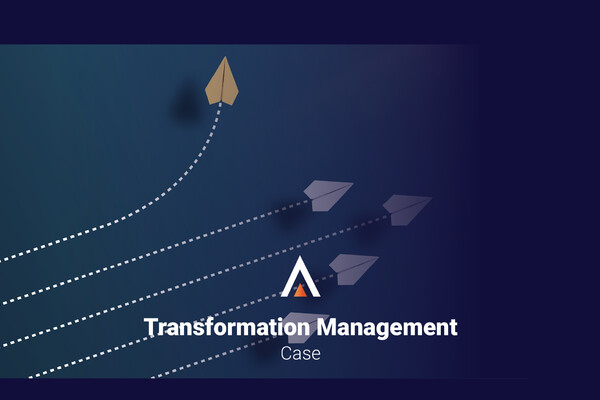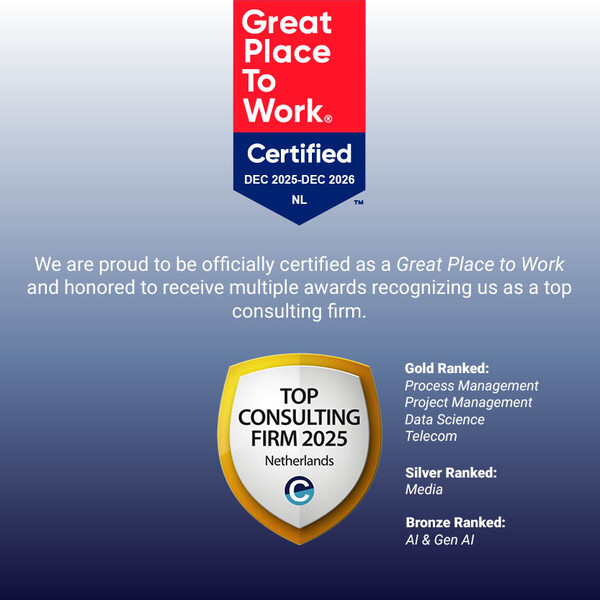Our way of working
Every organization has to deal with it sooner or later: change. Change is necessary to keep developing and growing as a company or organization. But how do you approach such a change? How do you make sure that a transformation, no matter how big or small, lands well within your organization and becomes a success?
We would like to take you through the challenge of one of our clients. Twice before, they had tried to transform different divisions in terms of processes to one particular standard. Both times this was done by introducing technology. The first time by migrating one division to the technology structure of the other division. The second time, a standard software package was chosen to be implemented at both divisions.
Unfortunately, both attempts at transformation ended in failure. Various factors were to blame for this, but important explanations could be found in the minimal attention to the change process and the different cultures within the company.
Vasco has extensive experience in launching transformation programs. Because we are maximally committed to the success of change with our clients, we take a specific two-step approach. First, we focus fundamentally on the people and processes being worked with and only then on the technology. Second, we make the transformation easy to keep track of by starting with small changes. By implementing small changes sequentially, we constantly achieve small successes that give the project confidence and make it manageable.
For our client, this approach was exactly what was needed to get the transformation back on track. In six months, our method allowed us to get the transformation program off the ground in three phases and give it wings.
Tailored approach
In the first phase of our method, it is always important to get the assignment in focus, determine the scope and ensure that the approach is widely supported.
At our client, we conducted more than 50 interviews in two weeks across the entire width of the organization and in all regions of the multinational in question. This gave us a clear picture of the challenges and opportunities in the industry, the organization as a whole and the task at hand. Based on this, we looked at the added value of the transformation for the company, so that we could also make it measurable at a later stage.
It is essential in this phase that the approach we draw up together has broad support within the organization.
Program design
Whereas every client and every assignment is unique and therefore the approach may vary, the design of a transformation program is fixed. There is always a plan, and there is always a project team and a program structure in which that team can be successful.
In this assignment, getting the organization on board was critical. The confidence that change can be successful had to come back. Our approach was a bottom-up approach where colleagues from different parts of the world came together to design a common process that would deliver value for the entire organization. We introduced a structure in which the project team used design-thinking workshops to collectively devise a new way of working, delivering and commissioning a minimum viable product (MVP) in agile teams.
From Vasco we provided a program manager and a business-readiness manager, so that we could properly supervise the transformation and also ensure the acceptance of the change throughout the organization. By preparing the users well through clear communication, training and testing, the performance of the operation was disrupted as little as possible and a 'new normal' was achieved in a short time.
Start-up/ Proof of Concept
Business and technology teams from Asia, Europe and America worked together daily. Throughout this phase, we paid a lot of attention to change management. By making it personal and fun, we brought team spirit into the project. A former Olympian and Vasco colleague gave presentations on high-performance teams; on how high-performing teams work and how they can accelerate.
With tooling like Miro and Teams and tight project hygiene, we worked intensively (and online) together for five months toward an MVP that would deliver immediate value to the organization. Across several axes, we analyzed what value we could deliver with the MVP and any subsequent phase. We tracked this value in a so-called benefit tracker throughout the project.
Throughout the proof-of-concept phase, we used surveys to measure confidence in the project and its outcome. We also monitored enjoyment of the work during this process. Not only among the project team, but throughout the program structure. So also in the board and the steering committee. The outcomes were an important indicator of the success of the change and enabled us to make timely adjustments or interventions if necessary. So, we knew from the approach phase on whether there was confidence in the team, the delivery of the MVP and the value the MVP would bring to the organization.
The structure was scalable. An onboarding program allowed us to quickly bring in new teams. We actually did this after the first successful six months. No longer in a proof of concept, but in the next phase of the transformation program. The transformation had taken off and the organization could confidently oversee a successful end result.







